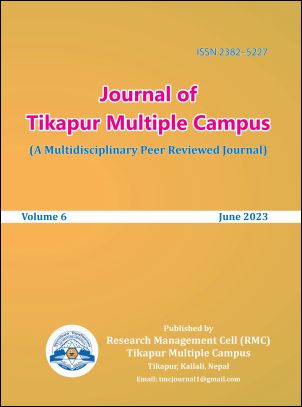Why do Labour Migrants Cross their Border? : A Comparative Analysis between Nepal and India
DOI:
https://doi.org/10.3126/jotmc.v6i01.56373Keywords:
labour migrants, cross-border, causes of migration, comparative analysisAbstract
Cross-border labour migration is the livelihood strategy between Nepal and India for a long. The purpose of this research is to compare and contrast the causes of cross-border labor migration between Nepal and India, with a particular focus on Nepal’s Sudurpaschim Province. Research is designed inthe post-positivism paradigm, using a mixed method with a strong emphasis on quantitative methods, i.e. QUAN-qual mixing. Field survey and Key Informant Interview (KII) including Focus Group Discussions (FGD) were conducted. The sample size was determined statistically where 370 samples (Nepali labour-migrants to India) and 280 samples (Indian labour-migrants to Nepal) were calculated. Data were analyzed using descriptive statistics for both groups of migrants and then compared between Nepali labour migrants to India and Indian labour migrants to Nepal. The main causes of labour migration between Nepal and India are observed as a short distance, easy entry exit, open border, social net work, travel cost, easily communicable, language similarities, climate match and migration decision. The job insecurity and irregularities of getting employment at origin seems major pushing factors in case of Nepali labour migrants but in case of Indian labour migrants, they choose their destination for better opportunities. About 93.0 percent of Nepali labour-migrants and 100 percent of Indian labour-migrants are migrated due to economic causes (i.e. lack of better opportunities, unemployment, poverty) while seven percent of Nepali labour-migrants are found migrate due to the political conflict in Nepal. The result of this study is applicable to understand the current situation of cross border labour migrants which can be supportive to develop the new strategies for economic and safer migration between two countries.
Downloads
Downloads
Published
How to Cite
Issue
Section
License

This work is licensed under a Creative Commons Attribution-NonCommercial 4.0 International License.
This license enables reusers to distribute, remix, adapt, and build upon the material in any medium or format, so long as attribution is given to the creator. The license allows for commercial use.




